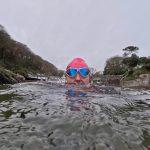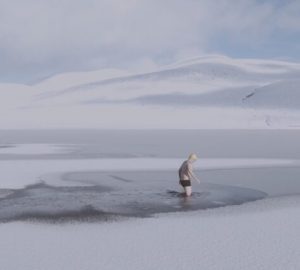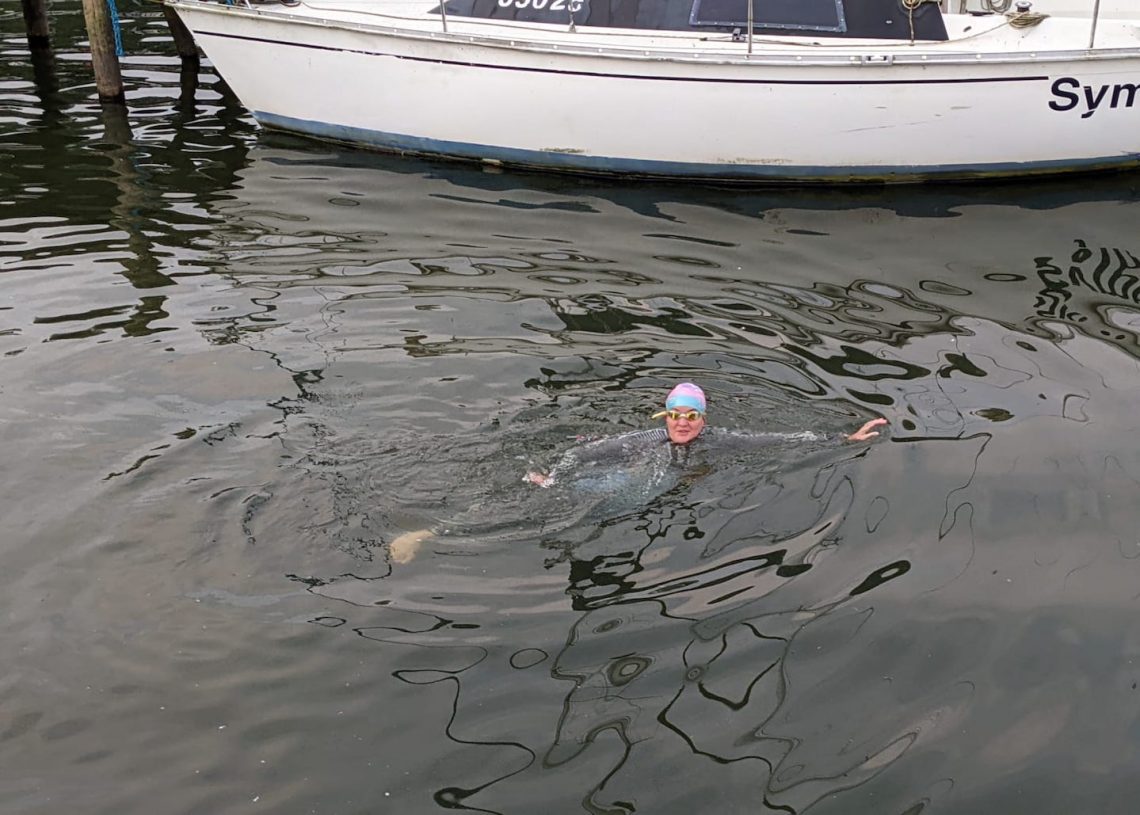
It’s all about starting: my training for the double Windermere crossing
In July 2022, Rachael Hunt completed the double Windermere crossing, a total distance of 21 miles. She shares her story of going from a swimming novice to a passionate open water swimmer, always on the lookout for her next challenge.
When I was asked to consider writing something about my swimming experience, I was unsure where to start. What could I possibly write that would be of interest to the super speedy swimmers I see every week flying up and down the pool?
It was then that it occurred to me that the real value in what I’ve learned while training for my swimming adventures, is that it’s OK to not be the one of the super swimmers.
There are other targets in swimming to aim for, not just being the fastest, and these can be every bit as satisfying when you reach them. In fact, the real achievement is not even in the distance of the swim but in the belief and the willingness to try.
Completing the Windermere double crossing
When I first started swimming five years ago, I was a size 24 and weighed in at 148kg (that’s just over 23st for those who think in ‘old money’). At the time, I could only manage two lengths of front crawl without a break.
This July, I completed the double Windermere crossing. That’s 21 miles from Ambleside to Fellfoot (there and back again). This was all front crawl and with no break apart from occasionally treading water and munching a mini Baby Bel and a Trek bar.
The swim took me 13 hours and 40 minutes and – apart from the last hour – I can genuinely say I loved each minute. So how did I get from not being able to swim for more than two minutes at a time to happily keeping going for nearly 14 hours?
A library of excuses
First, I’d say it’s down to getting going – just getting in the water each day and swimming. Like all of us I had a whole library of justifiable excuses not to train: I was too busy at work, had a cough, a cold, a sore leg, family demands, period pain, I’d forgotten my swim suit, the times of the class didn’t suit, my outfit was wrong, I was too fat, I needed to tidy the house bake a cake or do the shopping.
There are hundreds of reasonable and perfectly justifiable reasons to not train. It’s getting past all of these and accepting that they will always be there, that is the real barrier. The only person who could override all these excuses was me. The big change for me was my mindset – adjusting my perception to recognise this as a treat to myself rather than a chore.
To begin with, I certainly had to pretend this was the case. But somewhere along the journey I noticed that by pretending to make training a priority and an enjoyable treat, it really did morph from a chore into my favourite part of the day.
It’s also key to build up to something step by step. Once I had achieved a small goal, for example swimming for 20 minutes, then I would move on to the next one. I’d try swimming for 25 minutes or adding a different stroke.
Building up step by step
My first open water swimming event was a one-mile swim in Salford Keys in 2018. The following year I went back and did 5km. I then ventured for the Super6 at Swim Serpentine, which was a 10km event involving three sets of two laps of the one-mile Serpentine loop. I then did the one-way Windermere crossing last September.
I enjoyed the Windermere crossing so much, I immediately started to think about a longer distance. The pilot for the boat mentioned to me when I finished that I looked as though I could turn round and go back. I guess this planted a seed!
It was over the Christmas 2021, while moping in bed with a third bout of Covid, that I quietly logged on and signed up to the Windermere double crossing. I recognised I would need a goal to get me back into a training schedule and the seed that had been planted in the summer began to grow!
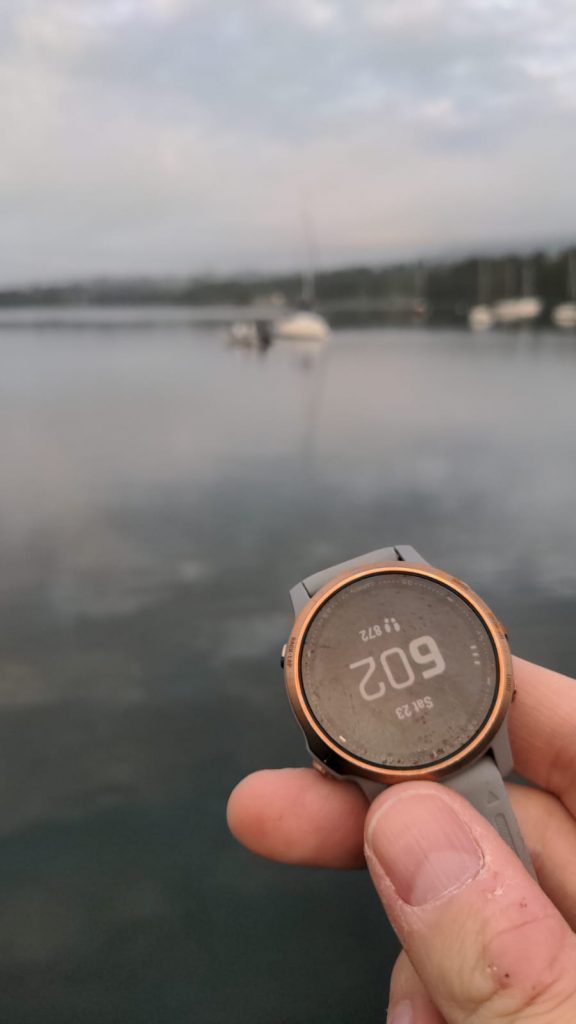
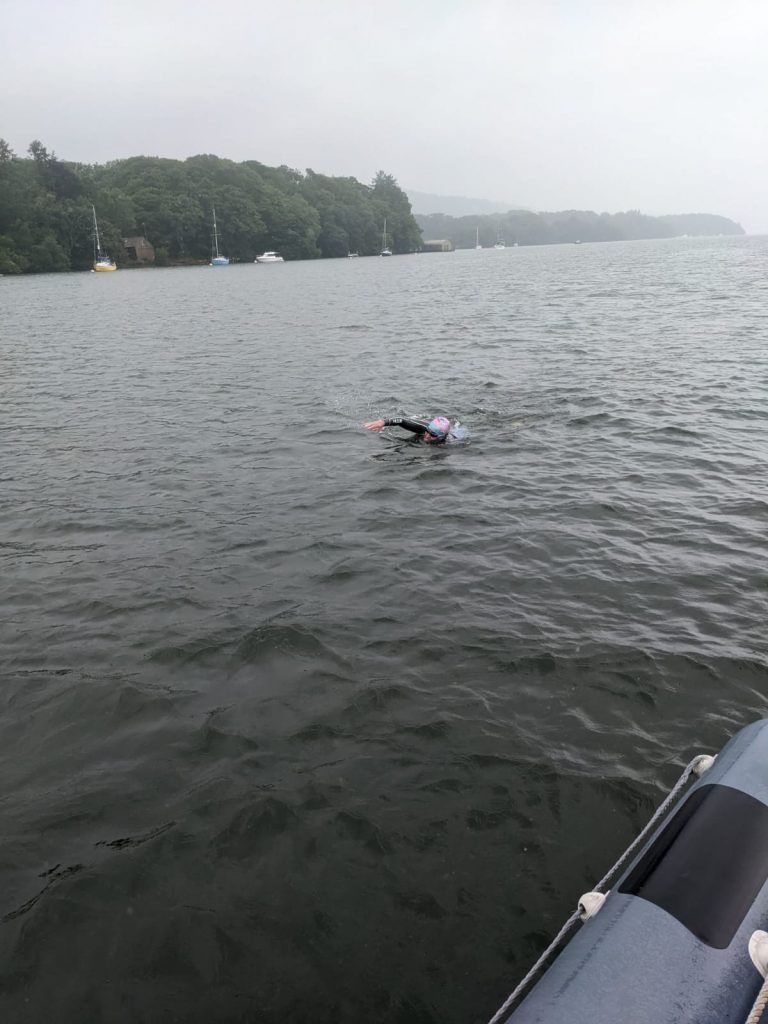
Running or swimming?
Come the New Year, I explained to Joe (the masters coach) and Teddy (my personal trainer) that I wanted to swim 21 miles. I started to gradually up my running, swimming and strength training.
I had also signed up to the Brighton marathon in April, so for the first few months of the year I focused on running three to four times a week, as well as swimming five times a week, plus three strength sessions. Unfortunately, after a little while ignoring niggles in my right knee, my leg froze up in March after a half-marathon run.
My physio recommended rest and rehab, then suggested I would need to make a choice between the marathon and then a long period of rest, or miss the marathon and avoid further harm and focus on the Windermere swim. There was no contest in my mind. Running was never going to get in the way of swimming.
So after a bit of a moping about missing the marathon, I got on with building up my swim training. I went to a masters swim camp in Lanzarote in May, where I swam for four hours a day for 10 days. I don’t think I’ve ever been so tired as the day I arrived home and ate a whole large Domino’s pizza and drank half a bottle of wine before sleeping for eight hours.
From May, in addition to my strength training (three to four hours a week), I was now doing two hours flex training, up to 14 hours swimming a week, yoga and a few random classes, such as HIIT core and circuits.
Just like when I started out, no excuses. Even when I was tired and grumpy, there was no swim that did not leave me getting out happier than when I got in. Not sure I can say the same for a core class, but you can’t have it all.
Everybody is an expert
The hardest part of the preparation wasn’t the training or even the swim itself, but dealing with the responses of others. I found that if I mentioned the challenge, it was like opening a flood gate of opinion on not just the feat ahead, but on my training schedule, my diet and even my social life!
Suddenly, everyone became an expert on endurance swimming. I was told I was over training, or that I was under training. I was told I was too fat, too thin, that my stroke was poor and that other people could do it quicker. The onslaught of opinion was at times utterly overwhelming.
You may (or may not) be surprised to learn that this advice was almost exclusively coming from people who I didn’t know well, and often had no experience of endurance training.
Meanwhile, the few people I told from the gym, swimming club or my running buddies were at times bemused but they were cautious about giving advice and mainly offered support and encouragement.
This was truly motivating and helped keep me going on some of the 6am starts when – having swum, run and weight trained the previous day – it could feel like swimming through treacle.
My coach Joe and personal trainer Teddy were also hugely supportive, telling me that it was possible and I could do it. I found that among all the noise of opinion and advice, I just kept returning to the little voice that I heard in my head when I first spied the 21 mile challenge. ‘Yep, I think I can do that.’
“Every day I get in the pool, or begin a run or a fitness class, I am pleased I have started. It doesn’t matter if you are at the back of the lane, if you have started you are already achieving something and that’s a reason to be proud.”
Rachael Hunt
Thankfully, my husband and son were equally committed to my success, allowing me to be out the house for hours jumping in lakes, going to classes, training in the gym and swimming for hours at a time!
A couple of friends accompanied me on trips to the beach so I could train in open water when local lake schedules weren’t accommodating. On one occasion I was in Lowestoft, swimming 4km against the current, climbing out and running back to the start before grabbing a Baby Bel (my secret energy weapon) and going again.
After the fourth time, my loyal friend was just starting to get very worried that I had not returned when I appeared, sauntering along the beach, wetsuit over my shoulder and beer in hand (donated by a group of local lads who had been watching my antics with much amusement from their beach hut).
I explained to my friend that the beer was for much needed calories and hydration, and had been the only reason I had managed to swim that far on the last lap, having spied it on the way back on the previous lap.
Lessons learned from the double Windermere crossing
Having swum 21 miles for the double Windermere crossing, what am I most proud of? In one word: starting. Every day I get in the pool, or begin a run or a fitness class, I am pleased I have started. It doesn’t matter if you are at the back of the lane, if you have started you are already achieving something and that’s a reason to be proud.
And if you want to start something big, no matter how daunting it seems or what other people say, trust that little voice in you that says, ‘I think I can do that’.
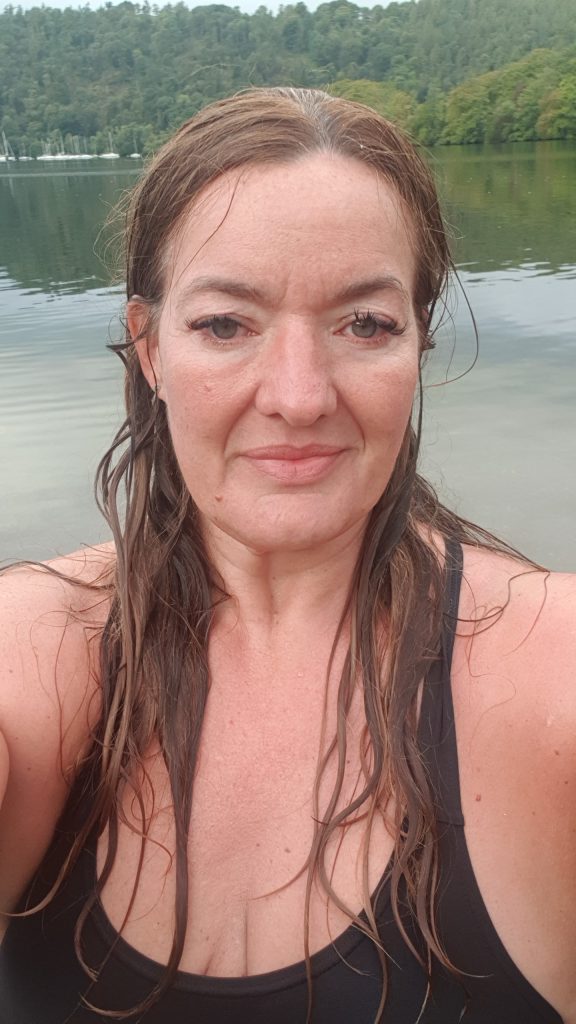
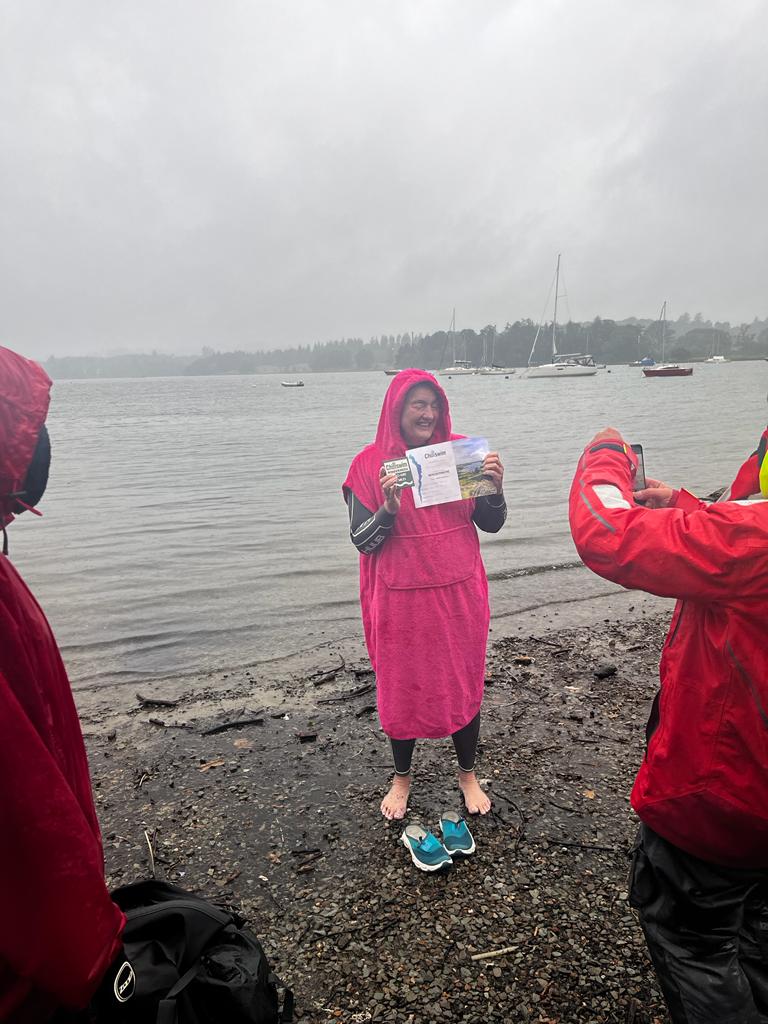
As for my next challenge? I have so many ideas. Maybe a mud run with an obstacle course. Some days I even consider a few sprints with all the incredible swimmers in Stortford Masters.
The one challenge I was always determined to do was Neptune’s Steps. Google it – it’s a Red Bull challenge that I signed up for prior to the pandemic, which was then cancelled. I feel like it’s the one that got away; I’d love to do it as it’s something a bit different.
On a final note, I just want to share the impact of being so readily accepted by the masters on my journey. I have noticed that people who train, whether it be running, swimming or in the gym, are supportive of those around them trying their best.
I think outcomes are important in our head, but getting on with it regardless of the barriers you face makes the real difference, and those people training alongside you understand this. After all, they each had as many very good reason not to get started as you did this morning, and here they are next to you. In my view, everyone that starts each and every time is pretty special.
Thank you all for never minding me being a bit slow or moaning about an injury, but thank you mostly for letting me start.
Read more inspiring readers’ swims.






